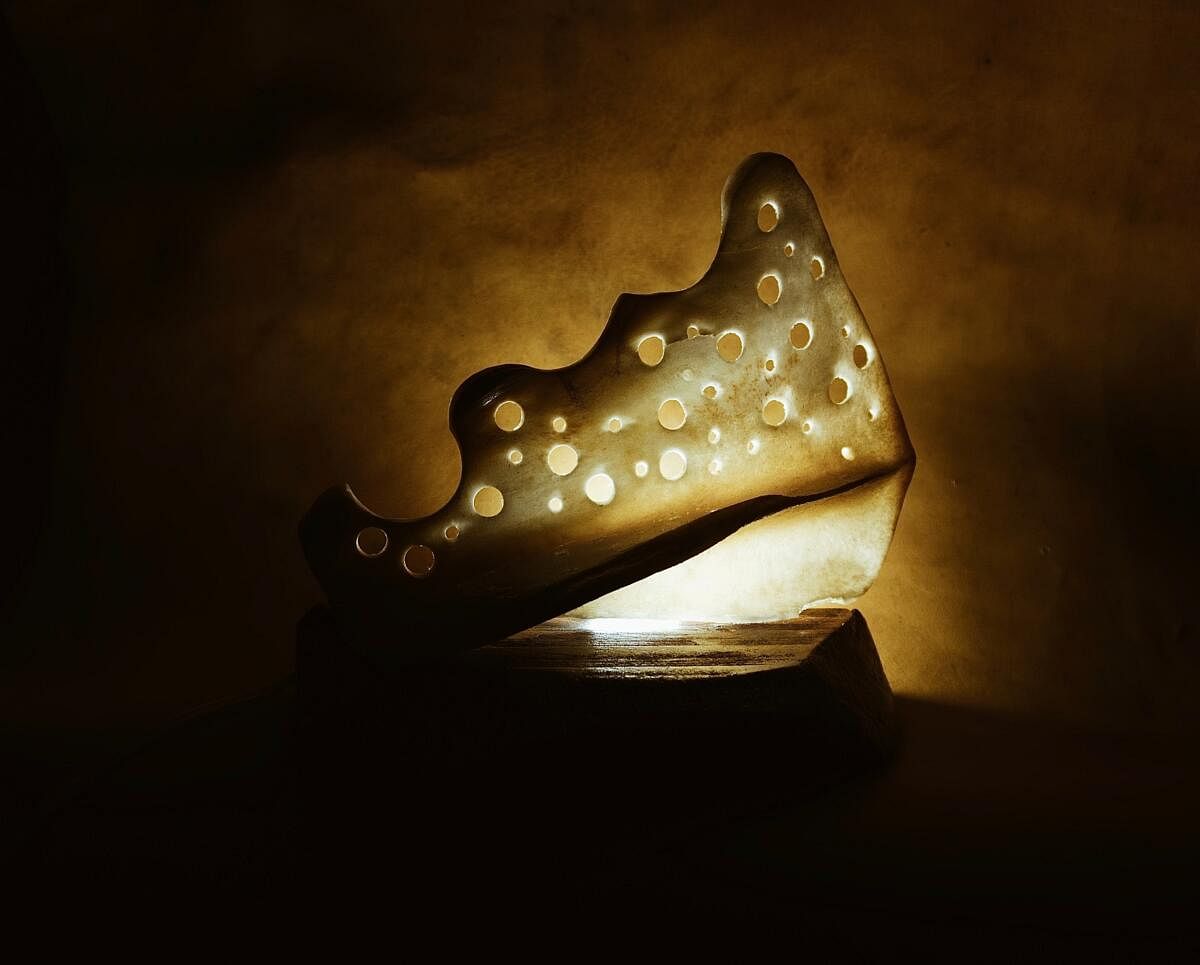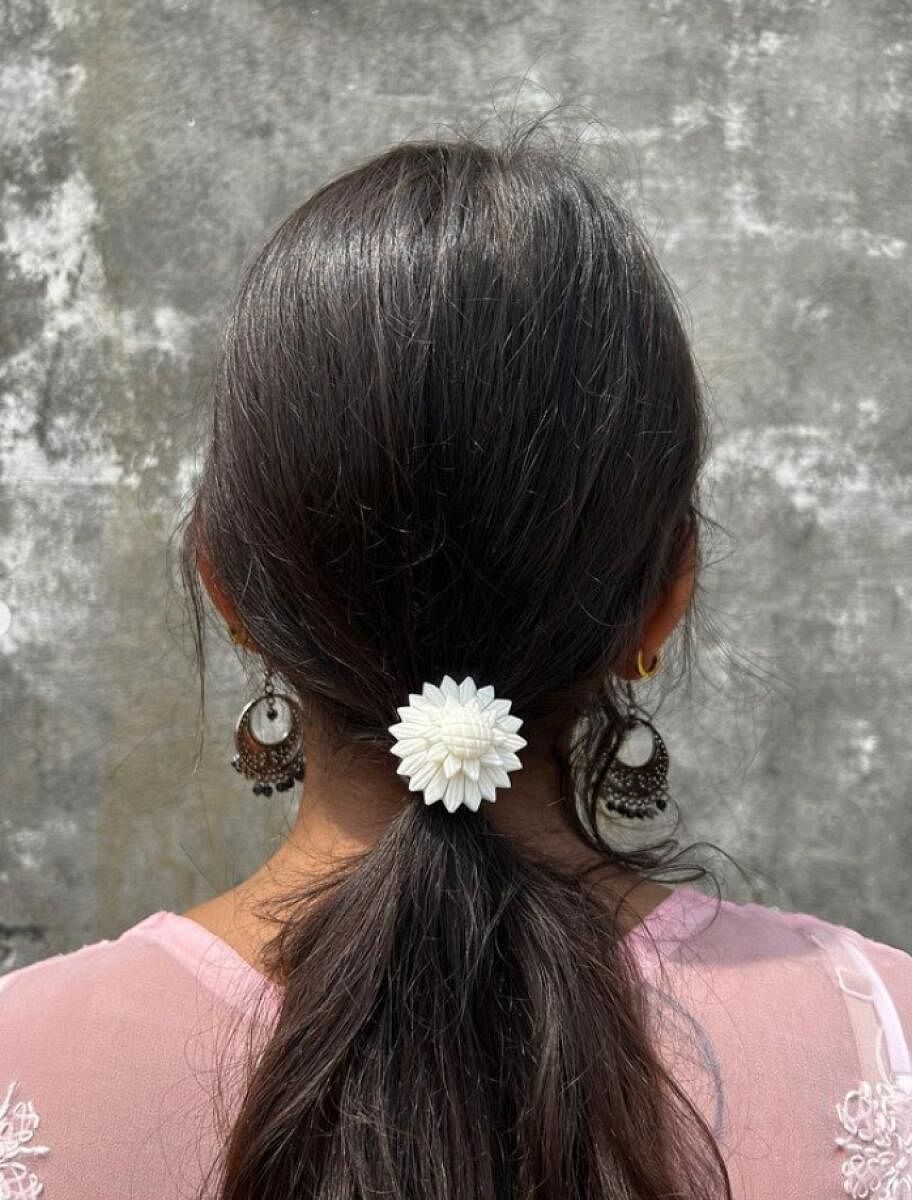

Ever imagined bones being turned into home decor and fashion accessories? That is how accessory designer, Shrey Sharma, chose to describe bone carving, a century-old craft from Lucknow.
This art form dates back to the Mughal Era and continues to evolve. From artworks to collectables and utilitarian products, it has been reinterpreted in multiple ways. And they are gaining attention worldwide.
Dheeresh Harish, founder of Art Renatus, an exclusive bone craft retail platform from Bengaluru, says, “From our jewellery collection, our line of chokers and studs are picking pace in North America. Recently, we have been creating minimalistic jewellery designs. People have also shown immense appreciation for artwork that was prevalent during 17th century India. Our chests, lamps, and wall clocks featuring geometric Mughal patterns are popular.”
Also Read | Under the sea influence
The pristine white look of the artwork attracts people who are increasingly adopting the Scandinavian aesthetic, he adds.
According to a report about the ‘The Next Neutrals’ on the trend forecasting company WGSN, interior trends are leaning towards textural whites, delicate silhouettes, and muted minimalism, and this artform has gained renewed interest.
Traditionally, bone carving was practiced using ivory which was transformed into decorative articles for the Nawabs of Awadh during the 17th to 19th century. After the ban on domestic sale of ivory in 1986 under the Wild Life (Protection) Act, 1972, the craftsmen have been working with alternatives like buffalo and camel bones. Despite their fragile nature, these bones can be structured into everything from bedside lamps to chandeliers. When combined with other materials like wood, leather and fabrics, the design possibilities are endless.
Bone carvers have upgraded their designs to incorporate functionality. “In 2017, NIFT Raebareli helped us understand our consumer market. Since then, we have been improvising and making wall clocks, photo frames, wall paintings, chess pawns, jewellery, and lamps,” says Aqeel Akhtar, an experienced bone carver. He won the State Handicraft Award from Uttar Pradesh state government in 2009. “Now, the demand for the craft has increased,” he adds.
Design process
Bone carving, locally termed nakkashi, is a week-long procedure. The process commences with cleaning the surface of the bone, and moves on to scraping, cutting, disinfecting, decolourising, and finally carving the bone with specialised tools. Shrey Sharma, a designer who is currently pursuing Accessory Design at NIFT, has been experimenting with bone carving for the past two years. He says, “Some common issues one faces are handling the raw bones, the unpleasant odour, and the respiratory issues caused by bone dust. Also, the bones tend to burn and turn brown due to the excessive heat emitted by the drills.”
Complementing textures
Incorporating meticulously crafted bones into your interiors also “creates depth and drama in a space”. Bengaluru-based interior designer Aakrati Agarwal, founder of Aakrati Interior Design Artist, says, “Whenever there is a white, textured statement piece, the interiors have to complement it. Since bone is a precious material that is more aligned towards nature, Bohemian, English style interiors and shades of peach work well.”
If floor decor like lamps are used, they should align with art pieces in the foyer, or be placed on the dining table or teapoy. But if they are large dramatic pieces then it can work as a ceiling element with lighting and shadow to create drama, she adds.
Aakrati says it is not advisable to use bone decor in formal workspaces, and restricts them to living rooms and home offices.
Global appeal
Bone craft has not only drawn attention in India but also worldwide. Dheeresh says, “Apart from clients in North America and the UK, we also get requests from Australia and Middle Eastern countries.”
Working with bones has been a prominent craft across the country. Though the base material remains uniform, the craft takes diverse forms in numerous states. Aqeel elaborates, “Bone carving is available in three categories in India. At Lucknow, we work with pure bones and our expertise lies in carving intricate designs. Jaipur is known for hand-painted bone craft and bones fused with wooden furniture are common in Sambhal.”
Fusing bones with different materials displays its diverse potential in the handicraft market. Shrey has tapped into this and created night lamps and designer shoes. He says, “Bones can be integrated with materials like wood, leather, and more with a strong adhesive. This quality broadens its scope and designers tend to explore making new innovative products.”
Maintenance
Wipe the pieces regularly (once a week) with a clean, dry cloth. To prevent breakage and maintain the shine, a resin coating could also be added, says Shrey.
Although the handicraft faced a threat with the rise in demand for mass-produced items, artisans like Aqeel and Jalaluddeen Akhtar have remained committed to this craft and its revival. The evolution of the craft over the centuries is a testament to its versatility.